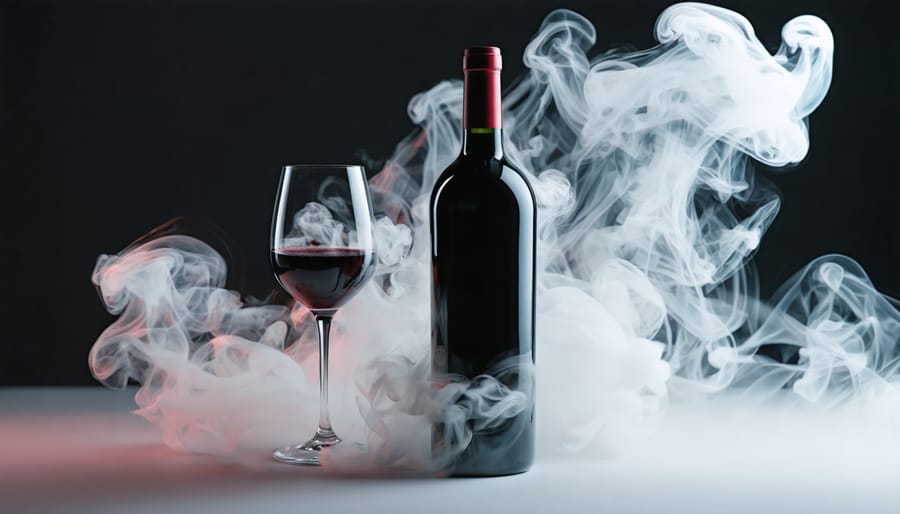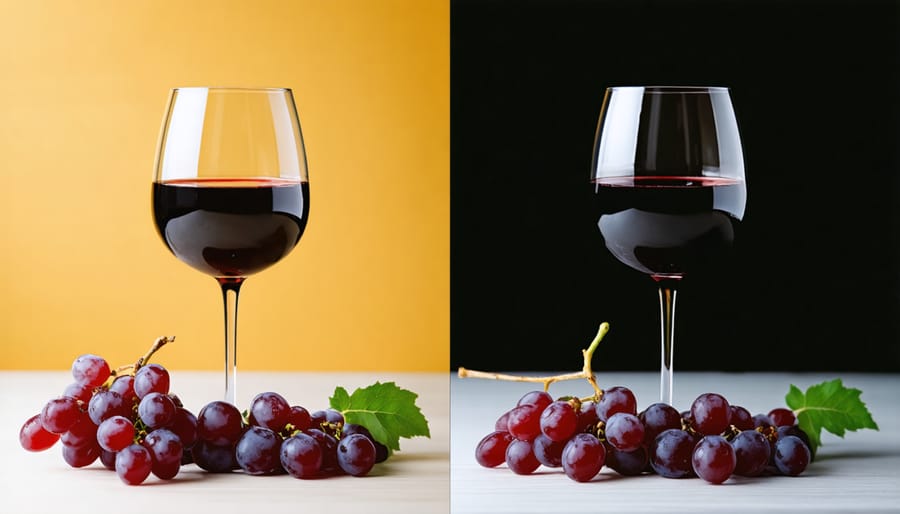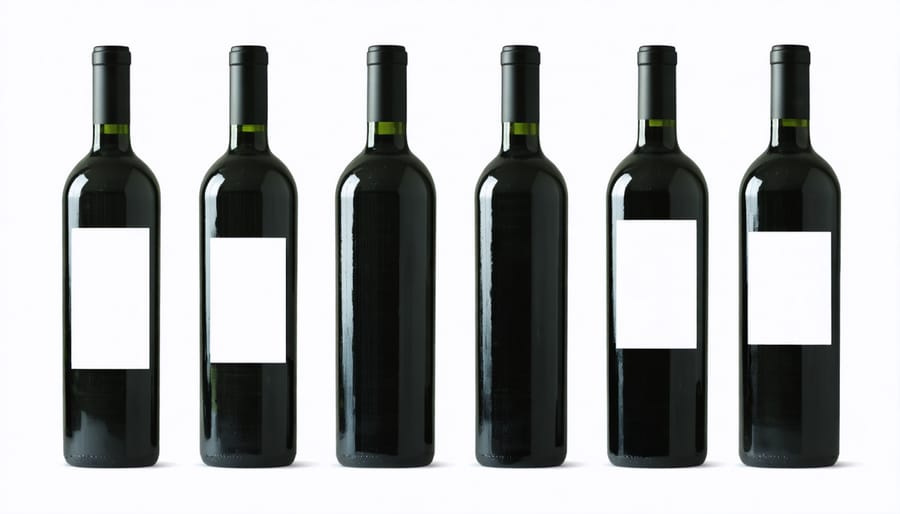
Picture this: you’ve just opened a spectacular bottle of Bordeaux, but you know you won’t finish it tonight. That’s where wine preservation gas becomes your secret weapon to preserve wine quality for days or even weeks after that first pour. This innovative solution replaces oxygen with an inert gas layer, protecting your wine from oxidation – the primary culprit behind that flat, lifeless taste we’ve all experienced with day-old wine. Whether you’re a casual wine sipper or a dedicated collector, understanding how to properly use wine preservation gas can transform your wine experience, ensuring every glass tastes as extraordinary as the first. Gone are the days of rushing to finish a bottle or watching your favorite wines lose their charm overnight. With this simple yet sophisticated preservation method, you’re equipped to enjoy your wines at your own pace, maintaining their intended character and complexity down to the last drop.
Why Your Opened Wine Goes Bad (And What You Can Do About It)
The Science Behind Wine Oxidation
Have you ever noticed how a glass of wine tastes different the next day? That’s oxidation at work! Just like how a cut apple turns brown when exposed to air, wine undergoes similar changes when it meets oxygen. Initially, some oxygen contact can help wine “open up,” releasing beautiful aromas and flavors – that’s why we swirl our glasses before tasting. However, too much oxygen exposure starts a chemical reaction that transforms those lovely fruit notes into less desirable flavors, often described as flat, nutty, or reminiscent of vinegar.
Think of it as leaving a fresh bouquet of flowers in water – they look gorgeous at first, but eventually begin to wilt. The same happens with wine molecules when they interact with oxygen for too long. This process affects both red and white wines, though some varieties are more sensitive than others. That’s why proper storage and preservation techniques are so important for maintaining those delightful flavors we love in our favorite wines.

Signs Your Wine Has Gone Bad
Nobody wants their favorite wine to go bad, but knowing the signs can save you from an unpleasant wine tasting experience. Trust your senses – they’re your best allies in detecting spoiled wine. If your wine smells like vinegar, wet cardboard, or musty basement, that’s a red flag. The color can also tell you a lot – white wines shouldn’t look brownish, and reds shouldn’t appear brick-colored or muddy.
Notice any fizzing in still wines? That’s not supposed to happen! Unless you’re enjoying a sparkling wine, bubbles are usually a sign of unwanted fermentation. The taste is your final indicator – if it’s sharp, acidic, or reminds you of nail polish remover, it’s time to say goodbye to that bottle.
Remember, wine should bring joy, not uncertainty. When in doubt, it’s better to be safe and open a fresh bottle rather than risk drinking spoiled wine.
Wine Preservation Gas: Your Secret Weapon
What Is Wine Preservation Gas?
Have you ever opened a beautiful bottle of wine, only to realize you can’t finish it all? That’s where wine preservation gas comes in – it’s like a magical shield that protects your precious wine from spoiling. As someone who loves hosting casual wine nights but often finds herself with partially finished bottles, I’ve learned just how valuable these preservation systems can be.
Wine preservation gas typically consists of inert gases like argon, nitrogen, or a blend of both. These gases are heavier than oxygen and create a protective layer over your wine, preventing oxidation – the primary culprit behind wine spoilage. Think of it as creating an invisible blanket that keeps your wine fresh and flavorful.
The most common types you’ll encounter are pure argon gas, which is considered the gold standard for wine preservation, and nitrogen-based blends, which are more affordable but still effective. Some preservation systems also use carbon dioxide, though this is less common for still wines and more frequently used for sparkling varieties.
What I love most about these preservation gases is how simple they are to use. Just spray a short burst into your bottle before recorking, and you’ve potentially extended your wine’s life by days or even weeks. It’s perfect for those of us who enjoy a glass or two but don’t want to feel pressured to finish the bottle right away.

How to Use Wine Preservation Gas
Using wine preservation gas might seem a bit intimidating at first (I remember feeling the same way!), but it’s actually quite simple once you know the steps. Here’s how to keep your favorite wines fresh and delicious:
Start by ensuring your wine preservation gas canister is at room temperature and properly attached to its dispenser. Hold the bottle at a slight angle, similar to how you’d pour wine at a dinner party. Insert the thin straw or nozzle that comes with your preservation system into the bottle, keeping it about half an inch above the wine’s surface.
Give the canister a quick, firm burst of gas for about 2-3 seconds. For larger bottles or if you’ve consumed less than half, you might want to give it another short burst. The argon or nitrogen gas will create a protective layer over your wine, keeping oxygen at bay.
Next, immediately re-cork your bottle or use the stopper that came with your preservation system. Store the bottle upright in a cool place – I keep mine in my wine rack away from direct sunlight.
Pro tip: Don’t forget to give your bottle a quick spritz of preservation gas each time you pour a glass. Think of it as giving your wine a little protective blanket! Many of my friends were amazed at how much longer their wines stayed fresh once they started following this simple routine.
Remember, while preservation gas works wonders, it’s best to enjoy your preserved wine within a week or two for optimal taste.
My Personal Experience: From Skeptic to Believer
I’ll admit, I was once a complete skeptic when it came to wine preservation gas. Like many wine enthusiasts, I thought, “How much difference could it really make?” My usual routine involved trying to finish a bottle within a day or two, or reluctantly watching a half-finished bottle slowly lose its charm in the fridge.
Everything changed when my sister gifted me my first wine preservation system for my birthday last year. I remember staring at the sleek canister, wondering if I was overthinking the whole “wine preservation” thing. But that first experience was eye-opening.
I was hosting a small dinner party and opened a beautiful bottle of Pinot Noir – one of those special ones I’d been saving. As usual, we didn’t finish it. Instead of recorking it and hoping for the best, I followed the instructions and gave it a quick spray of preservation gas before sealing it.
A week later (yes, a whole week!), I decided to pour myself a glass. I was genuinely shocked. The wine tasted nearly identical to when I first opened it. The fruit notes were still vibrant, the finish was clean, and there wasn’t a hint of that flat, oxidized taste I’d come to expect from older opened bottles.
Since then, I’ve become somewhat evangelical about wine preservation gas. I’ve saved countless bottles from going to waste, and I’ve actually saved money in the long run. Now I can confidently open any bottle, knowing I can enjoy it at my own pace without compromising quality.
What I love most is the flexibility it gives me. I can open multiple bottles for food pairings without feeling pressured to finish them all. I can have a single glass of white wine on a Tuesday and know the bottle will still be perfect for weekend entertaining. It’s completely changed how I enjoy and share wine with friends.

Smart Tips for Getting the Most from Your Wine Preservation Gas
Let me share a little secret from my wine-loving journey: getting the most from your wine preservation gas is all about technique and timing! First, always ensure your spray nozzle is clean before use – I learned this the hard way when a clogged nozzle once ruined my favorite Pinot Noir. A quick wipe with a clean cloth before each use does wonders.
When spraying, hold the bottle at a 45-degree angle and spray in short, controlled bursts. Think of it as creating a protective blanket over your wine rather than flooding it. Three to four seconds of spraying is usually perfect for a standard 750ml bottle with about half the wine remaining.
Here’s a game-changer: don’t wait until the end of the evening to use the preservation gas. If you know you won’t finish the bottle, spray it immediately after your first pour. This helps maintain those delicate flavors that make your wine pairing suggestions work so beautifully.
Store your preserved bottles upright in a cool place – this maximizes the effectiveness of the gas barrier. And while it might be tempting to keep preserved wines for weeks, I’ve found that even with preservation gas, most wines taste best within 3-5 days of opening.
One common mistake I see friends make is forgetting to check if their preservation gas can is running low. Give it a quick shake before use – if it feels light, keep a backup handy. There’s nothing worse than realizing you’re out of gas when you’re trying to save that special bottle!
Remember to reseal the bottle tightly after spraying, and avoid repeatedly opening and closing the bottle, as each exposure to air reduces the effectiveness of the preservation gas.
Embracing wine preservation gas has truly revolutionized the way we enjoy our favorite wines at home. As someone who loves hosting casual wine nights with friends, I can’t imagine going back to the days of rushing to finish a bottle or watching a beautiful wine lose its charm after just a day or two. Whether you’re a casual wine enthusiast or a dedicated collector, this simple solution offers peace of mind and ensures every glass tastes as intended by the winemaker.
Remember, wine preservation gas is an investment in your wine enjoyment. It’s incredibly easy to use, cost-effective in the long run, and helps reduce waste by keeping your opened bottles fresh for longer. From preserving that special bottle you want to savor over time to maintaining multiple open bottles for food pairings or tasting sessions, this tool adds flexibility to your wine experience.
I encourage you to give wine preservation gas a try. Start with a basic system and experiment with different wines to see the difference for yourself. Your future self will thank you when you’re enjoying that perfectly preserved glass of wine days after opening the bottle. Cheers to making every glass count!



